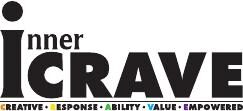The science of conversation can be used in any situation, whether it’s professional networking events, business meetings, social parties with new friends, or meeting in-laws for the first time.
- Luckily the science is the same whether you love conversation or you don’t
The first rule is set your intention
- This is actually one thing that we most often forget.
- The best conversationalist always set the intention for the conversation.
- This helps ward against those awkward lulls or pauses. .
Before you meet someone or before you go to an event, think about what you want to get from the event?
- Are you there to get new business?
- Are you there to meet a significant other?
- Are you there just have a good time?
- Are you there to learn something, about someone?
Just setting that minor intention no matter where you’re going, helps you guide your conversation.
- You need to have that guiding drive, to know what you want to talk about, or ask next.
- so set your intention before you even show.
- It’s kind of like a game plan and making sure you have a plan.
- It’s setting up your strategy for the night.
- Again, it could be as simple as I just want to laugh and have a good time, because that’s gonna change the direction of your conversation.
Re-source: Receptiveness
able or willing to receive something, especially signals or stimuli : (of a female animal) ready to mate
When you think about conversation you usually think about the first line. But research shows that our first impression doesn’t happen when you first hear someone; it happens when you first see someone.
- The best conversationalist start their conversation on the approach.
- Set yourself up right any time you’re about to initiate conversation or when you’re about to go to someone and introduce yourself.
The best first impression happens when you have nice open body language
- You want your hands really visible
- out of pockets, not attached to your purse, not behind your back.
- this helps with our trust cues
- Have your shoulders down and back.
- Anytime we turtle it signifies anxiety.
Your smile is actually your opening line.
- When you smile, it warms them up.
- They think, “Oh this person is about to talk to me,” and it gets them already going.
The best opening is a simple “Hello, how are you?”
- If you think about it you don’t really want to say something too intense when you first start.
- Smile, go up you say “Hey, how are you? I’m ___________, and then you go into what’s next.
- It’s so easy and it’s so natural, so don’t think of anything crazy just go with what’s simple.
Then look for what’s called “Conversation Sparks.”
- This is the difference between a dazzling conversation and a regular, new conversation.
- Conversation sparks are the nonverbal cue when you’re engaging curiosity.
- Nonverbal science across cultures, genders, and races have one thing that everyone does when they are super engaged – it’s the eyebrow raise.
- Any time someone says something interesting we go, “Oh.”
- We’re looking for the topics the conversations the stories that make us say “Oh, really?”
- that means we’re really listening
Set your intention right
- Maybe your intention is to get to know your in-law better
- So what you’d be doing is asking questions while you’re trying to look for likes and mutual likes.
- “Do you like this restaurant, vacation, etc.?”
- Do we have similar hobbies that we like?
- Then you’re looking for that, “Oh, I loved the baseball game last night.”
- Then you know you’ve hit it, you’ve hit a spark; and you can go down that rabbit hole in the conversation.
- So you’re looking for the spark (the eyebrow raise)
- when you set that intention, that’s what you’re looking for the whole time
A really easy way to end a conversation is using what is called a “future mention.”
- “So hey what are you up to this weekend?” “What are you doing later today?”
- It shifts the focus from present to future.
- If they talk about this weekend they’re going to go to the hike in Forest Park, that’s your cue to say, “Well, it was so great speaking with you. I wish you the best of luck on that hike. I hope it’s great fun”
- That future mention is a nice clean, polite way to thank them for the conversation and then wish them the best of luck on whatever their future.
When you want to be approached, or you want to approach someone else, look for the “pivot out.”
- That’s when someone’s talking to each other, but their body is actually angled out.
- their toes are angled out
- That means they’re much more open and available to approach.
- You want to do the same if you’re talking to someone, and you still want people to come up for you, make sure you pivot out towards the room.
- That signals people that you are open physically and literally
You’re much better off going to get a drink and always have something in your hand.
- It feels nicer to have something in your hand.
Plant yourself right where people exit the bar or the food, because that’s the “sweet spot.”
- That’s where everyone’s like, “I have no one to talk to me.”
- So be that person who’s like “Hey, hello, how are you?
- What what are you drinking? Where did you get it? Doesn’t this food look great?
craving and resource from “How to Talk to Anyone with Ease and Confidence” by Vanessa Van Edwards
